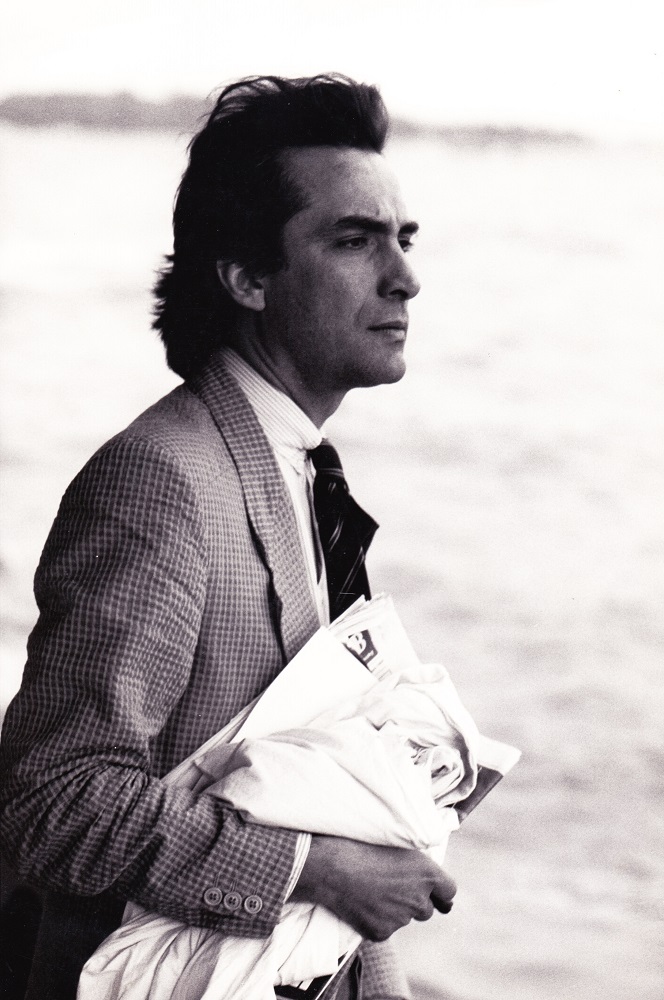
Alberto Abate, artist and essayist, was one of the main protagonists of the movements of Cultured Painting and Anacronism. He was among the first to use the idea of overcoming modernist themes linked to the concept of avant-garde, bringing back into art a figurative painting that draws fragments from the past to reassemble them in a complex place. On this basis, Abate is considered one of the architects of post-modern painting and this role is widely recognized by international critics. The architects Paolo Portoghesi and Philip Johnson engaged in a fruitful dialogue with him Architecture-Painting. Edward Lucie-Smith reports Abate as one of the twenty most representative Italian artists of the last decades of the twentieth century (Art Today, Phaidon Press, London 1995) and includes him among the leading artists of the neoclassical and international movement (ArTomorrow, Terrail, Paris 2002). Linda Kaiser, in her Anachronism and the Return to Painting: The Origin is the Goal (Silvana Editoriale, Milan 2003), places him among the major exponents of the movement.
Sylvano Bussotti dedicates a chapter to him in his Disordine alfabetoico (Spirali Edizioni, Milan 2002). Abate is mentioned in the volume Sul filo della memoria (Laterza, Bari 2010) by Domenico Muzzi.
Alberto Abate’s family has origins in Catania and roots in art. Alessandro Abate (1867-1953), his paternal uncle, is a painter and watercolourist. A careful witness of the nascent Italian bourgeoisie between the end of the 19th century and the first decades of the 20th century, he receives numerous public commissions and international recognition, exhibiting – among other places – in Santiago de Chile and Paris.
His father, Carmelo Abate (1912-1956), a sculptor of the 1930s and 1940s, characterized his work as an original rethinking of classical Renaissance forms.
His Genius of Poetry, in marble, is still located today in front of the Palazzo della Civiltà del Lavoro in Rome, and the large bronze angel (six meters high) is placed on top of the Church of SS. Pietro e Paolo in EUR is among his most representative works.
Alberto Abate was born in Rome on March 16, 1946. In the 1950s he attended the Catania Art Institute and the local Art Institute: his teachers were the sculptor Domenico Tudisco and the painter Giuseppe Giuffrida. He enrolled at the Academy of Fine Arts and at 19 he received his first assignment as a teacher of Life Drawing at the Catania Art Institute, a position he held until 1973. The following year he moved to Padua to teach at the Pietro Selvatico Art Institute. The periods in Catania and Padua were characterized by political commitment and passion and by the intense study of artistic language and techniques.
Abate taught History of Contemporary Art and Semiology of Visual Arts at the Faculty of Architecture of the University of Catania and collaborated with the cultural page of the Corriere del Veneto of the Corriere della Sera.
His essay writing activity has been constant: numerous theoretical contributions on contemporary art have appeared in magazines and catalogues, starting from 1977.
At the invitation of various institutions or sociétés savantes, he has held seminars and conferences (Italian Psychoanalytic Society, New York University, Italian Cultural Institute of New York, University of Trieste, Spanish Cultural Institute of Rome). He has taken part in numerous conferences (among which Psicoanalisi, arte, persona held in Milan in 1985, whose proceedings – published by Franco Angeli in 1987 – contain his “La pittura, la morte e la maschera di Atteone”).
Alberto Abate passed away in Rome after a short illness on March 9, 2012, at the age of 65.
© 2025 – www.albertoabate.com |All Right Reserved | Privacy Policy | Cookie Policy | Web Design by ADM